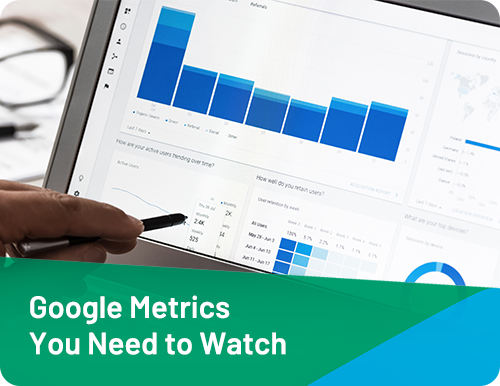When it comes to search engines, Google is still one of the popular options used around the world. Understanding how it works can help your website rank better, but it is constantly looking to update its algorithms and improve user experience. You need to do more than use the right keywords and backlinks. Today, websites that offer their visitors real value will ultimately rank highest in Google searches.
Which Google Analytics Should You Focus On
When you complete your Google analytics signup, you will discover many different metrics are available, but you don’t need to do a Google analytic course. Google dashboards display the metrics that can help you understand whether visitors consider your site’s content valuable, thereby providing a head-start in achieving a higher rank in search engines. Initially, it is advisable to focus on the following basic Google analytics dimensions to get underway.
Bounce rates
One of the most important web analytic for determining your visitor’s experience is the bounce rate. The website bounce rate is the percentage of visits limited to a single page. A “bounce” means that someone comes to your site and then leaves again, having only seen that single page. Understanding bounce rate requires an appreciation of how information is searched. When a person enters specific search criteria, they are most likely to click on links that appear on the first page. If your site ranks on the first page, it is more likely to be visited. However, simply ranking on the first page is not enough to keep visitors on your site. Visitors will stay if they find what they are looking for and enjoy the experience. If not, they will immediately ‘bounce’ from the site. A high bounce rate can indicate that the content on your site is not relevant to the search term the visitor used or the visitor is not enjoying the experience on your website. Making sure your website is relevant to the search terms and ensuring a positive user response on your website through a good interface and user experience design is vital. Make sure you keep an eye on your bounce rate Google Analytics.
Time on page
 The average time spent on a page is a crucial metric in marketing terms. The longer someone stays on your website, the better. It means they are finding what they are looking for and is likely to reflect an engaging and easy to use website experience.
The average time spent on a page is a crucial metric in marketing terms. The longer someone stays on your website, the better. It means they are finding what they are looking for and is likely to reflect an engaging and easy to use website experience.
Pages per visit
Next, the number of pages per visit statistic will give you an indicator of whether visitors are enjoying the content and whether the links within your site are effective. If you find that visitors are clicking a link and quickly returning to the previous page, it could help you determine which pages need refinement – depending, of course, upon their purpose.
Users
This metric is the number of visitors who have at least one session on your site. This metric tells you more accurately how many people have visited your site. You are particularly keen to see this dimension performing well on your Google Analytics dashboard. You rely upon traffic visiting your site, and this measure is part of the data you need to consider.
New users
The other crucial metric you will want to consider is new users. Typically you’ll want a nice balance of new users discovering you for the first time and returning users who are pleased with your website and coming back for more. It’s about growing your customer database by creating meaningful brand experiences with new customers and building brand loyalty amongst your existing customer base.
Use your analytic reporting to make smarter business decisions
 So what can you do if analytics inform you that the bounce rate is high and the average time on site is low? Begin by improving your content for optimal user experience. Make sure that your visitors find the information they want as fast as possible. The keyword tool is a marker for this. By learning the keywords visitors use to arrive at your site, you can see whether your content meets those criteria. One useful tip to discover whether your content is beneficial is to add a paragraph or two of an article onto a second page. If your visitors click through, then you know they were interested to read on and learn more. For more on how you can improve the user experience for your website visitors, look to Webcentral. We have a team of locally-based experts who know Google Analytics metrics inside out. Give us a call on 1300 638 734. We’d be happy to help.
So what can you do if analytics inform you that the bounce rate is high and the average time on site is low? Begin by improving your content for optimal user experience. Make sure that your visitors find the information they want as fast as possible. The keyword tool is a marker for this. By learning the keywords visitors use to arrive at your site, you can see whether your content meets those criteria. One useful tip to discover whether your content is beneficial is to add a paragraph or two of an article onto a second page. If your visitors click through, then you know they were interested to read on and learn more. For more on how you can improve the user experience for your website visitors, look to Webcentral. We have a team of locally-based experts who know Google Analytics metrics inside out. Give us a call on 1300 638 734. We’d be happy to help.
